
|
Astronomy Picture Of the Day (APOD)
 Blue Stagglers in Globular Clusters
Blue Stagglers in Globular Clusters
3.11.1997
This old dog is doing new tricks. On the left is ancient globular cluster 47 Tucanae which formed many billions of years ago. On the right is a closeup of its dense stellar center by the Hubble Space Telescope, released last week.
2.11.1997
Where did these two irregular moons of Uranus originate? Last week two previously undiscovered moons of the distant gas planet were confirmed, the first in irregular orbits. All fifteen previously known moons of Uranus are 'regular', circling near the planet's equator. Most of these were discovered by the passing Voyager 2 spacecraft in 1986.
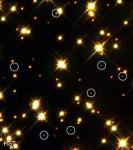 White Dwarf Stars Cool
White Dwarf Stars Cool
1.11.1997
Diminutive by stellar standards, white dwarf stars are also intensely hot ... but they are cooling. No longer do their interior nuclear fires burn, so they will continue to cool until they fade away. This Hubble Space Telescope image covers a small region near the center of a globular cluster known as M4.
 M31: The Andromeda Galaxy
M31: The Andromeda Galaxy
31.10.1997
Andromeda is the nearest major galaxy to our own Milky Way Galaxy. Our Galaxy is thought to look much like Andromeda. Together these two galaxies dominate the Local Group of galaxies. The diffuse light from Andromeda is caused by the hundreds of billions of stars that compose it.
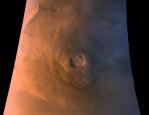 Haunting Mars
Haunting Mars
30.10.1997
This Halloween, the news about Mars is good news - Mars Global Surveyor will resume aerobraking into a mapping orbit around the haunting red planet. Wide angle cameras onboard the spacecraft recently recorded this shadowy image of Olympus Mons, the Solar System's largest volcano, from an altitude of over 100 miles.
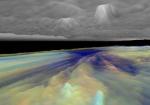 3D View Of Jupiter's Clouds
3D View Of Jupiter's Clouds
29.10.1997
Every day is a cloudy day on Jupiter, the Solar System's reigning gas giant. This 3-dimensional visualization presents a simplified model view from between Jovian cloud decks based on imaging and spectral data recorded by the Galileo spacecraft. The separation between the cloud layers and the height variations have been exaggerated.
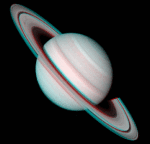 Stereo Saturn
Stereo Saturn
28.10.1997
Get out your red/blue glasses and launch yourself into this stereo picture of Saturn! The picture is actually composed from two images recorded weeks apart by the Voyager 2 spacecraft during its visit to the Saturnian System in August of 1981.
 Rafting for Solar Neutrinos
Rafting for Solar Neutrinos
27.10.1997
Where have all the neutrinos gone? A long time passing since this question was first asked (decades) as increasingly larger and more diverse detectors sensitive to neutrinos from our Sun have found fewer than expected. But why?
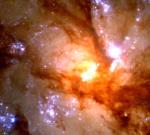 Closeup of Antennae Galaxy Collision
Closeup of Antennae Galaxy Collision
26.10.1997
It's a clash of the titans. Two galaxies are squaring off in Corvus and here are the latest pictures. When two galaxies collide, however, the stars that compose them usually do not. This is because galaxies are mostly empty space and, however bright, stars only take up only a small amount of that space.
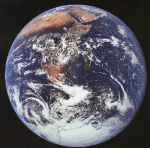 Welcome to Planet Earth
Welcome to Planet Earth
26.10.1997
Welcome to Planet Earth, the third planet from a star named the Sun. The Earth is shaped like a sphere and composed mostly of rock. Over 70 percent of the Earth's surface is water. The planet has a relatively thin atmosphere composed mostly of nitrogen and oxygen.
|
January February March April |
|||||||||||||||||||||||||||||||||||||||||||||||||